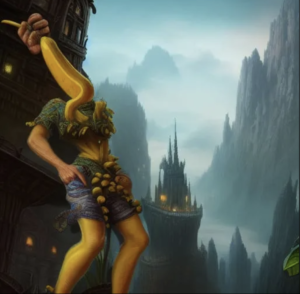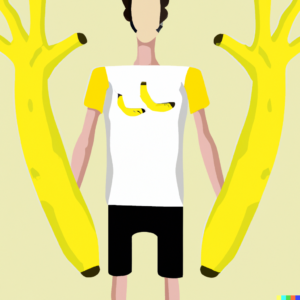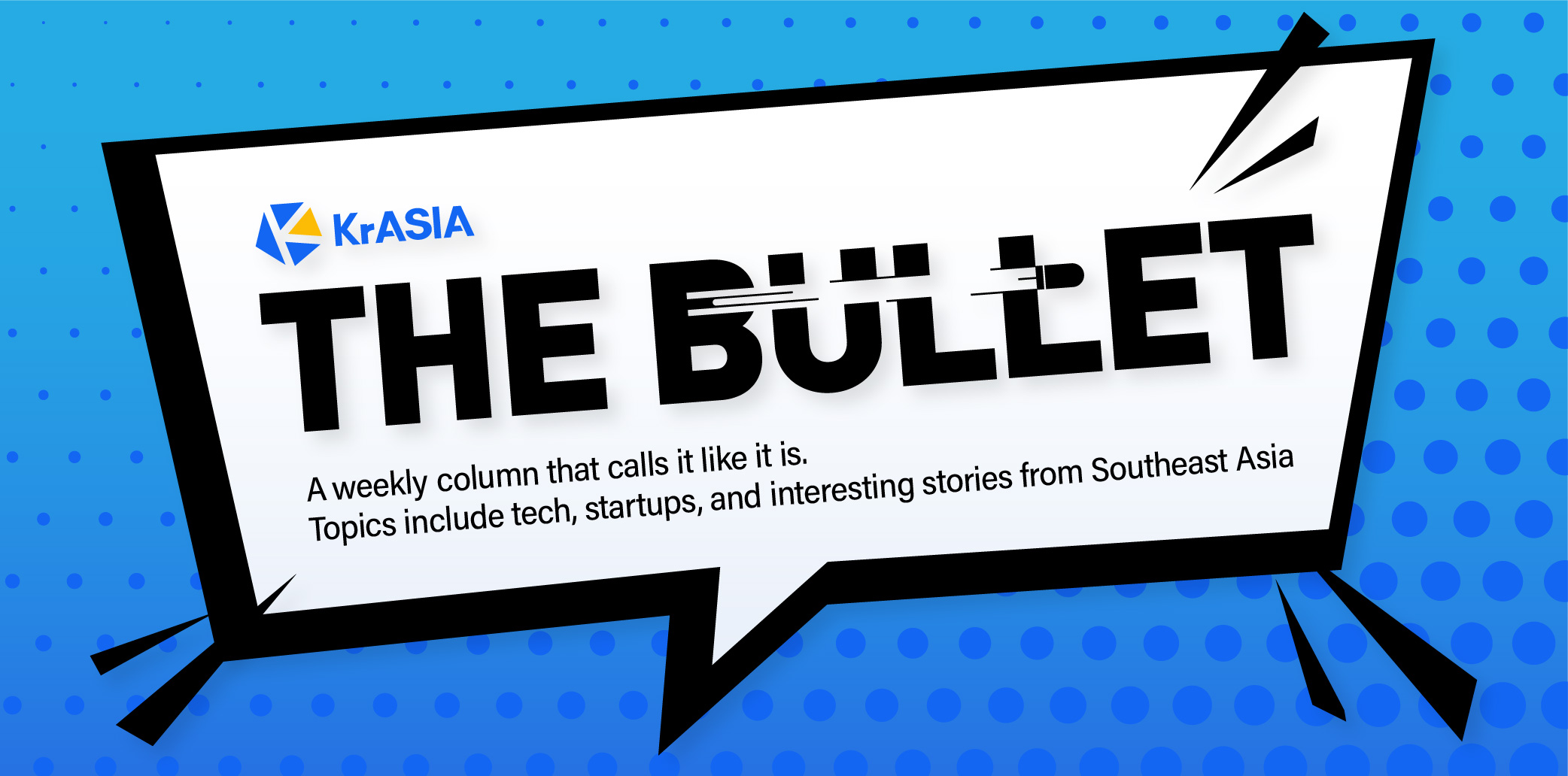I was talking with a colleague the other day about AI-generated art, and she posed an interesting question.
“Can AI really truly be ‘creative’ or is it just endlessly rehashing the data that it’s fed?”
It got me thinking about not only the current state of generative AI technology (specifically those that “create” art) but also where it might go and what impact it might have on artists, society, and the world.
So let’s start with what we have now. Most technology platforms that market themselves as having “AI-generated art” operate pretty similarly. Apps like DALL-E 2, NightCafe, or Deep Dream Generator require users to type in a few words or upload photos of a subject, and the AI platform will create a realistic image or piece of art based on that input.
For example, if you type in the phrase “a tall guy with banana fingers” — you’ll likely receive a variety of photos or paintings representing what you typed.


In a previous Bullet article covering an AI-curated podcast, I made it clear that technology takes time to develop, and the same holds true for AI-generated art. At some point, developers will want AI-art platforms to create original art—as in, thought-provoking art that represents an abstract concept or idea that the AI came up with, rather than art that’s a literal interpretation of a prompt typed by a human.
And if AI could do that, would that be the opposite of generative art? Would AI create something original by analyzing what has already been drawn? There’s a video on YouTube titled The Missile Knows Where It Is… that I think represents how AI would go about creating unique art. It’s a little absurd but it also represents the complexity of an algorithm to deduce if an idea is indeed “original.”
Regardless of its creation process, when AI is capable of independently conceiving of and churning out 100 original art pieces a minute at a level that is seemingly indistinguishable from a human, there are two important questions to consider:
- Does human creativity become more or less valuable in the face of AI?
- Will there be a clear demarcation between the roles of AI-generated content and human-generated content in the future?
To be clear, I don’t have those answers. For me, art is meant to either stimulate something within you, either conceptually or emotionally, or represent an idea that transcends language barriers. Does the fact that a complex computer algorithm created a piece of art take away from human-created art? I don’t think so. And should an art gallery slap a notice below each piece of AI-created art stating that it was created by a computer? Again, I don’t think that’s necessary. Just like I don’t need to know if my pizza is cooked in a wood-fired oven or an electric oven, but that’s just me.
The one thing I think we’ll lose with 100% original AI art is our connection to the artist. When we learn that an artist painted a picture after losing a loved one or was inspired by a tragedy in their life, we view the art differently. The story of the creator can influence how we feel or perceive art. Art without an artist’s story can still be beautiful (or terrible), but we inherently lose a connection, one that’s established by knowing that we’re looking at something created as an expression by a fellow human being.
AI art certainly has its uses, particularly for businesses or when you need a quick visual representation for content without having to go through a graphic designer.
And when—not if—AI is capable of creating unprompted art, the questions posed in this article are ones we’ll likely think about and potentially debate within the upper echelons of our governments. For now, sit back, enjoy the ride, and have fun laughing at art based on “a tall guy with banana fingers.”
All opinions expressed in this piece are the writer’s own and do not represent the views of KrASIA. Questions, concerns, or fun facts can be sent to [email protected].

